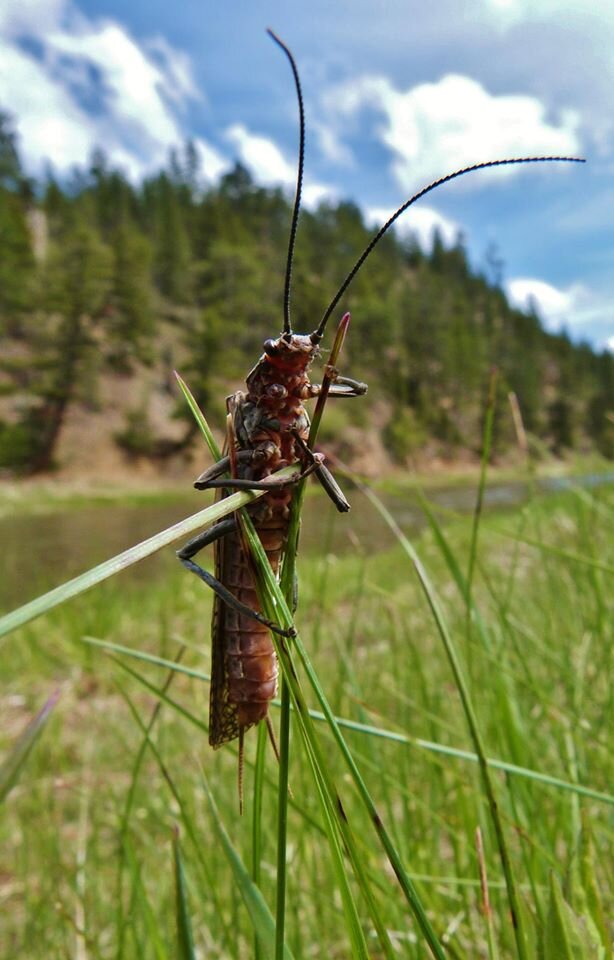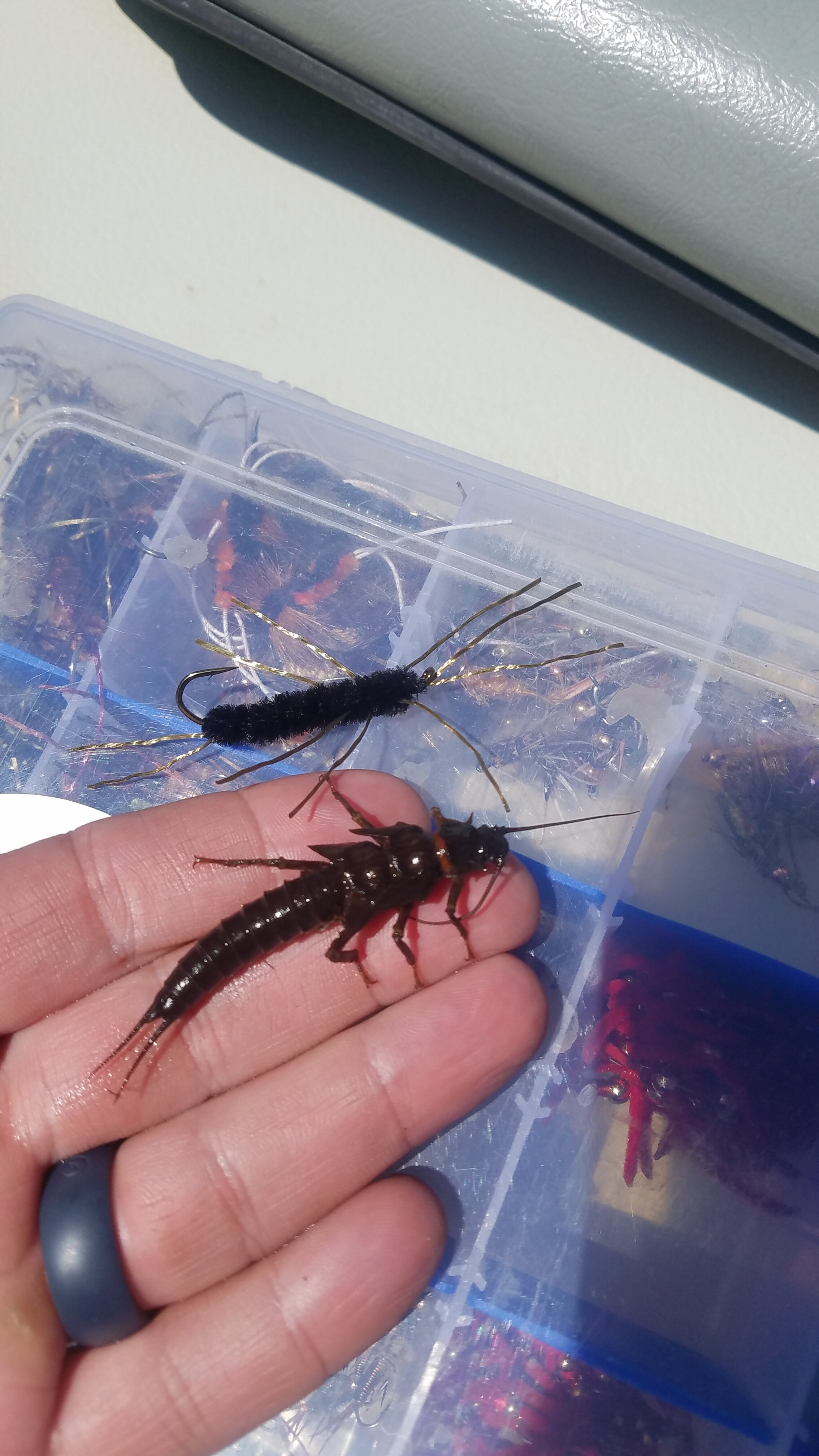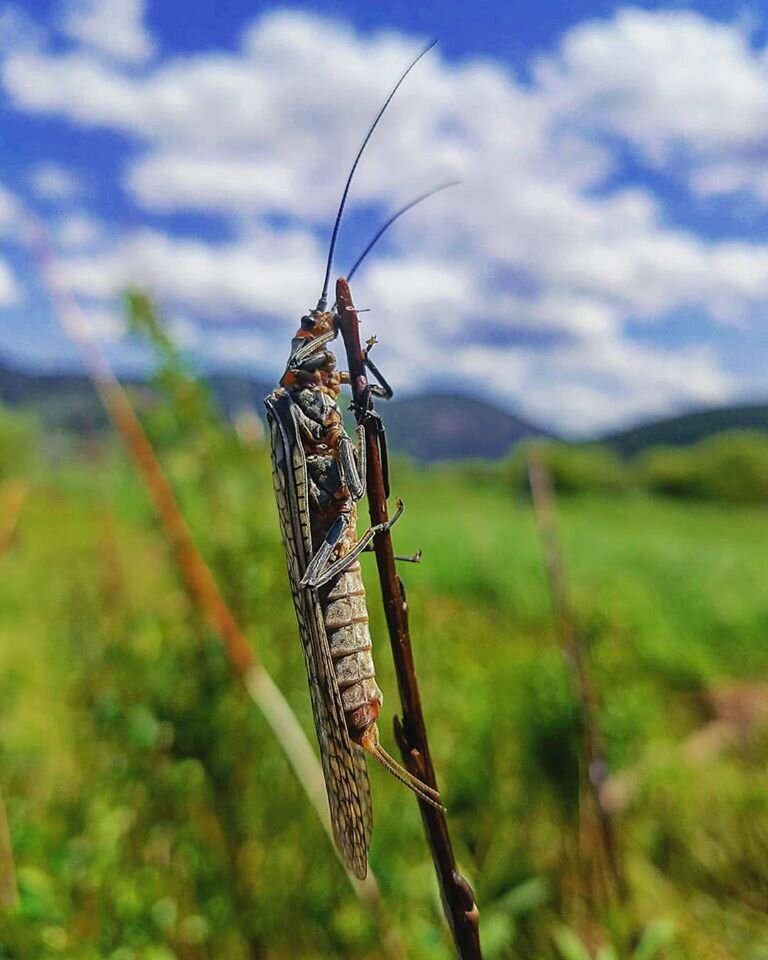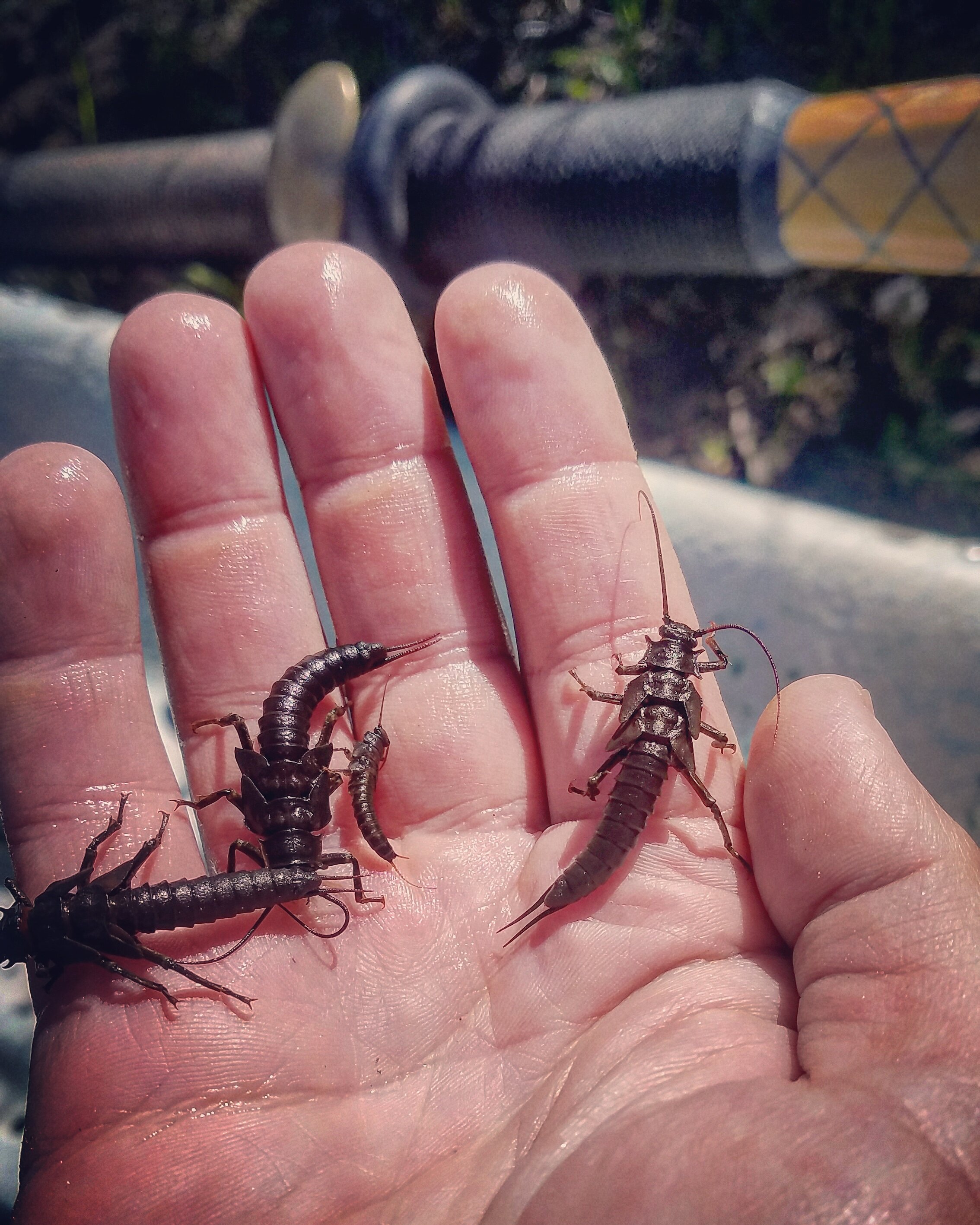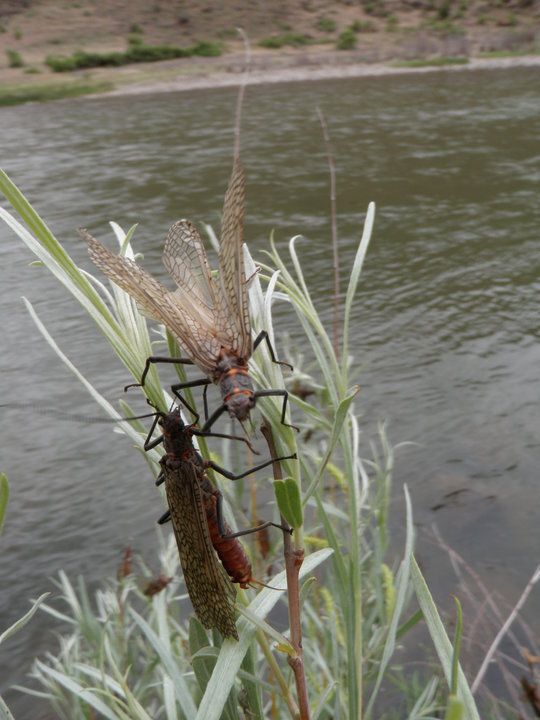Salmonflies
Pteronarcys californica – the Big Bug
Few hatches get people as riled up and acting silly as the giant salmonfly. Each year folks wait with bated breath for the arrival of the Western Tanagers, gorgeous birds whose appearance generally coincides with the pre-hatch movement of nymphs to the shoreline. Astute observers will visually scour the bank (willow branches, logs, rocks, bridge abutments, etc) for the presence of shucks left behind by newly-winged bugs who’ve migrated to the bushes to mate.
But the timing of this hatch is notoriously unpredictable. Though the emergence often occurs during periods of high, turbid flows or unstable weather, people nonetheless flock to the famous rivers throughout the west to chase this giant bug. And the Big Hole is no exception.
“This is the famous Salmonfly, and is the largest species of all mayflies, stoneflies or caddisflies hatching on any western river, up to 3 inches long. In late-May to early July, adults are hatching and providing trout fisherman with exciting dry-fly fishing on the surface or underwater with large artificial nymphs. Adults are fairly weak fliers and are very conspicuous by their size and erratic flight over the river making them easy pickings for feeding trout or insectivorous birds.” – from the MT Field Guide
I’ve been lucky enough to chase salmonflies on a handful of great western rivers.
The Gunnison River in CO was my first experience with this hatch. Sleeping in the back of my 1990 Toyota single cab pickup for a week straight every year in a desert, hiking up-canyon day after day hoping the odds would eventually tilt in my favor. About 1 year out of 4 saw the stars align and the conditions cooperate. After seeing this hatch in several other places over the years, I’d say that’s about right. Perhaps that has to do with the 4-year life cycle of the truly giant salmonflies…… or perhaps it’s just a game of odds.
There are far more predictable and consistent hatches.
There are many hatches that provide better and more consistent fishing.
In the best of years, “The Hatch” lasts no more than two weeks. And if it just so happens to snow or hail or blow 50 mph, well, the hatch gets knocked down (sometimes even before it ever really got going) and you’ll simply have to wait until next year.
In addition to the erratic nature of runoff and June weather, many days the fish are completely gorged on the huge stonefly nymphs. I imagine them sulking in the river like me on the couch after downing an entire pizza. It can be quite frustrating for anglers….seeing these giant bugs flying around and clumsily dropping to the surface of the water to lay eggs…..and yet, fish just don’t seem to be interested. Such is life.
Days like that, mercifully having managed a fish or two, you can literally feel the full bellies crunching against the pressure of your hand while the fish regurgitates the nymphs.
“Ahh. No wonder they’re not eating my flies!”
And yet, the reality is this; merely seeing these 3” flying cheetos is to experience a truly remarkable phenomenon of nature.
The birds go crazy, the fish go crazy, people go crazy….
__________________________________
Somewhere, lost to the abyss of belongings misplaced during moves, there’s an old Nikon camera of mine with about 1000 photos of every stage of an emergence in our boat camp on the 2nd night of a Smith trip. We sat for hours with headlamps glued to our coolers, watching in awe as the primordial struggle of salmonflies straining to extricate themselves from their nymphal shucks took place right before our eyes. It does not happen fast.
I was able to track down one image from that night. If you look closely, you can see the physical strain as this bug pulls back from its exoskeleton, its antennae poised to snap like a rubber band, helpless and exposed until free.
Re-birth.
Before they can fly, salmonflies must pump the new wings full of blood.
The Hatch
Giant salmonflies have a life cycle of 4 years, though you will often see salmonflies of different sizes & age classes (possibly in addition to the smaller, but still large American Salmonfly - Pteronarcys dorsata) during a hatch. Multiple cohorts may exist in any given river allowing a salmonfly hatch to occur every year, but some cohorts are stronger than others. They require well-oxygenated water, so they thrive in swift, bouldery, riffly stretches of the river; narrow canyon reaches are ideal habitat. They are classified as crawlers. Prior to emergence the nymphs migrate to preferred locations in the shallows. When ready, they crawl out and attach themselves to rocks or riparian plants where they molt into adult winged insects. If dislodged from the cobble on the streambed, they are unable to swim and are subject to the current. Egg sacs are often visible on the posterior of females. They drop eggs on or just above the surface of the water.
Feeding Habits
Pteronarcys nymphs eat detritus. They are generally are considered shredders as a functional feeding group and feed on large particular organic and leaf materials that have collected in debris dams or behind boulders or logjams.
The Threats
“The biggest threats to the salmonfly are attributable to the loss of habitat through siltation, sediment filling interstitial spaces in the cobbles, or increasing water temperatures beyond the species thermal limits.” – MT Field Guide
This is a familiar refrain; climate change and habitat loss are primary drivers of species decline in so many places.
Anecdotal observations from many long-time anglers and guides say that this hatch has declined significantly on the Big Hole River. While our efforts at the Big Hole River Foundation to collect macroinvertebrate samples each fall will eventually help us to understand the relative abundance of these bugs, it will take years of collection to effectively identify trends.
However, habitat improvement projects can help provide a critical buffer against the measurable impacts of a changing climate (declining snowpacks, reduced flow, warmer water temps, etc) and help increase the resiliency of our watersheds in the face of such challenges.
So, if the preservation of coldwater fisheries is important to you and the allure of experiencing a salmonfly hatch is something you connect with, consider supporting groups working to collect data and improve habitat.
Cheers,
Brian

